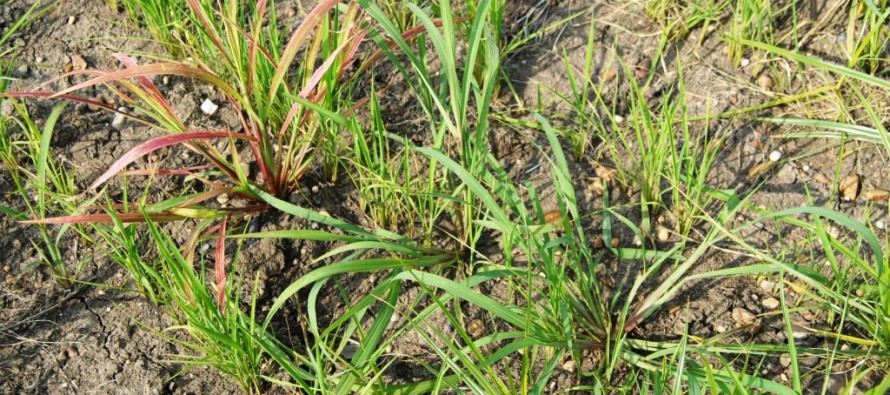Early-season Weed Control in Mississippi Rice

Little to no tillage occurs in the spring in most Mississippi rice fields because of the heavy soil textures common in the rice-producing counties. Therefore, burndown herbicide applications are extremely important. As rice planting dates have moved earlier into the spring, growers and consultants should give attention to preplant intervals for burndown herbicides. Glyphosate plus 2,4-D is a popular, broad-spectrum burndown treatment for rice, but 2,4-D should not be applied within 28 days of planting. A spring burndown program for glyphosate-resistant Italian ryegrass should begin with clethodim (12 to 16 ounces of Select Max or 6 to 8 ounces of 2-lb clethodim formulation) applied not less than 30 days before planting. The only other reliable postemergence herbicide option for Italian ryegrass control is paraquat. Large ryegrass (12 to 24 inches) will require two applications of paraquat (4 pints of Gramoxone SL or 2.67 pints of 3-lb paraquat) spaced 10 to 14 days apart. Barnyardgrass is resistant to five herbicide modes of action in six states across the rice-producing area of the U.S. Barnyardgrass management
requires a thorough, multi-faceted approach. A good barnyardgrass control program would begin with making certain that all barnyardgrass is controlled at planting. Start clean. This cannot be under rated as a control tactic. Use an at-planting application of a residual herbicide. Like Palmer amaranth in row crops, barnyardgrass is much easier to control before it comes out of the ground. Over-the-top programs should contain mixtures of postemergence and residual herbicides with multiple modes of action. Mixtures containing different modes of action are also important to reduce the selection pressure on the limited chemistries available in rice that are active against barnyardgrass. Regardless of the herbicide mixture, timing is critical. Well-timed, early-season applications always provide the most consistent control. Too often, barnyardgrass is sprayed in the three- to four-leaf stage (or tillering) rather than the one- to two-leaf stage. Barnyardgrass cannot be sprayed too early. Finally, strive for 100% control before flood. Do not wait for barnyardgrass to emerge to decide how to control it in rice. Use all the tools available, i.e., effective burndown, residual herbicides, well-timed postemergence application, tank mixtures, and the flood.
No Comments
Write a comment
Subscribe to receive updates
More Info By
Subject
Editors
- Allen, T. (380)
- Bond, J. (184)
- Catchot, A. (394)
- Cook, D. (288)
- Crow, W. (107)
- Dodds, D. (241)
- Falconer, L. (13)
- Gholson, D. (27)
- Golden, B. (117)
- Gore, J. (359)
- Henn, A. (41)
- Irby, Trent (172)
- Larson, E. (311)
- Little, N. (92)
- Mills, B (6)
- MSU Extension Service (39)
- Musser, F. (202)
- Oldham, L. (83)
- Pieralisi, B. (22)
- Wilkerson, T. (14)
- Zurweller, B. (8)





Let me tell You a sad story ! There are no comments yet, but You can be first one to comment this article.
Write a comment